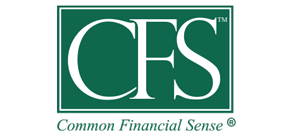The impact of donating appreciated stock
Giving appreciated stock can be a gift for both you and your favorite charity.
For many people, the end of the year brings about a time for reflection and a renewed sense of purpose. We tend to get together with family and friends and focus on what matters most. If generosity is in your heart, this might mean thinking about how you can make a greater impact on your favorite charities.
Donating long-term appreciated securities may not only serve its purpose of supporting causes you care about but also help you realign your portfolio and donate in a tax-efficient way. Learn more about how this strategy not only benefits the nonprofits you love, but how it can be used as a wealth management tool.
A gift for them, a (tax) break for you
Donating appreciated stock to a public 501c3 charity offers several benefits, most notably, the ability to make a larger value donation than giving cash after liquidating. You can avoid capital gains tax on the appreciated amount that you would have incurred had you sold the stock, and you get a tax deduction for the full fair market value of your long-term capital gain asset – up to 30% of your adjusted gross income. It can be a win-win for those planning to donate to their favorite cause.
Another benefit? At the end of the year, it’s common practice to rebalance your portfolio. If you’re considering donating appreciated stock, you can do so strategically to reduce a concentrated equity position and help bring your portfolio back in line with your goals.
If you decide to donate a stock as an alternative to gifting cash, you can repurchase identical shares, often resulting in a step up in cost basis with no concern of a wash sale.
Gifting stock to a donor advised fund (DAF)
The ability to donate your appreciated stock to a DAF adds a potential benefit: the opportunity to grow your donation, tax-free. Donors use DAFs as a tool to enhance their charitable giving. The fund (a charity in and of itself) distributes the contributions to approved 501(c)(3) organizations that you select when you’re ready. You don’t have to gift the funds right away either. You can invest them and let them grow for as long as you wish.
Additional benefits of DAFs include the ability to contribute to the fund and claim the accompanying tax deduction when it works best for you and your financial plan. It also offers an opportunity to get multiple generations involved in your philanthropic endeavors by asking for recommendations for charitable organizations to fund and designating individuals as successor advisors to ensure your legacy of giving continues.
A bunching strategy can also work particularly well with DAFs. If you’re charitably inclined but don’t have sufficient itemized deductions to exceed the standard deduction, you may decide to bunch donations by making a large charitable gift during a single year, equal to the total donation you would have made over several years. This can help you take advantage of itemizing in the year of your large donation, while taking the standard deduction in future years. Keep in mind that there are some changes to these rules coming as a result of the One Big Beautiful Bill Act. In 2026, itemizers will need to gift more than 0.5% of their adjusted gross income (AGI) to recognize any charitable deductions.
There are several factors to take into account when deciding how best to share your wealth with the causes closest to your heart. Donating appreciated stock may be one of the strategies to consider, especially as you look to the end of the year and seek to rebalance your portfolio.
The process of rebalancing may result in tax consequences. Donors are urged to consult their attorneys, accountants or tax advisors with respect to questions relating to the deductibility of various types of contributions to a donor advised fund for federal and state tax purposes. To learn more about the potential risks and benefits of donor advised funds, please contact your financial advisor.


 and
and  in the U.S., which it awards to individuals who successfully complete CFP Board's initial and ongoing certification requirements.
in the U.S., which it awards to individuals who successfully complete CFP Board's initial and ongoing certification requirements.